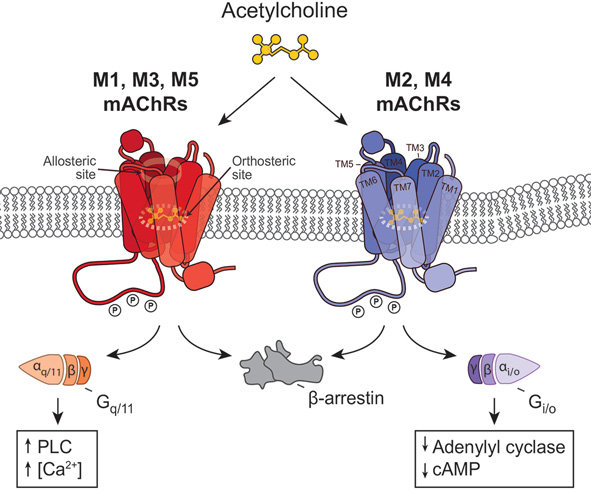-
Microtubule Associated inhibitor
ABT-751 是一种抗有丝分裂剂,能够抑制微管聚合,与 β-微管蛋白结合在秋水仙素位点;在 G2M 阶段阻断细胞周期并诱导凋亡。 -
Microtubule Inhibitor
CYT997 是一种新型的抗癌血管破坏剂(VDA)。在体外实验中,CYT997 被证明能强效抑制受血管内皮生长因子刺激的人脐静脉内皮细胞的增殖(IC(50) 3.7 ± 1.8 nM),并在 100 nM 的浓度下引起显著的形态学变化,包括细胞膜起泡。 -
Microtubule Associated inhibitor
Docetaxel(Taxotere)是一种抗肿瘤药物,其作用机制是破坏细胞中对于有丝分裂和间期细胞功能至关重要的微管网络。 -
Microtubule Associated inhibitor
Epothilone A 通过在紫杉醇结合位点稳定微管形成,并在 G2/M 过渡期引起细胞周期阻滞,从而导致细胞毒性。 -
Microtubule Associated inhibitor
Epothilone B 是一种大环内酯,它在非有丝分裂细胞中引起细胞内微管的成束形成,诱导形成超稳定的微管蛋白聚合体,并在有丝分裂期阻止细胞周期的进行。 -
KSP Inhibitor
Ispinesib(SB-715992)是一种强效的微管蛋白动力蛋白抑制剂,这种蛋白质对于形成双极性有丝分裂纺锤体和细胞周期通过有丝分裂的进程至关重要。 -
ERRα and ERRγ inverse agonist
Kaempferol 被发现能够抑制牛主动脉肌球蛋白轻链激酶,其抑制常数 Ki 为 0.3-0.5 微米。此外,Kaempferol 还能通过一条新的 ERK-NFκB-cMyc-p21 通路抑制 VEGF 表达和体外血管生成。 -
Microtubule Associated inhibitor
Paclitaxel(Taxol)是一种有丝分裂抑制剂,它能稳定微管,并因此干扰细胞分裂过程中微管的正常分解。 -
Microtubule Associated inhibitor
Vinflunine Tartrate 是 Vinflunine 的酒石酸盐,它以 IC50 为 18.8 nM 破坏微管,并干扰细胞分裂过程中微管的动态。 - Vinorelbine 是首个 5??NOR 半合成 vinca alkaloid。它通过从长春花(学名:Catharanthus roseus)提取的生物碱进行半合成得到。
-
Microtubule Associated inhibitor
卡巴紫杉醇是一种天然紫杉类的半合成衍生物。卡巴紫杉醇与泼尼松联合使用是继多西他赛治疗后用于治疗激素难治性前列腺癌的治疗方案。 -
TTK inhibitor
CFI-402257,一种吡唑并[3,4-b]吡啶衍生物,已被发现是一种TTK抑制剂,能够影响染色体分离并诱导细胞死亡,因此在抗癌研究中具有重要意义。 -
Integrin inhibitor
Cilengitide 是一种环状 Arg-Gly-Asp 肽,具有潜在的抗肿瘤活性。Cilengitide 结合并抑制 alpha(v)beta(3) 和 alpha(v)beta(5) 整合素的活性,从而抑制内皮细胞间的相互作用、内皮细胞与基质的相互作用以及血管生成。 -
Integrin inhibitor
Cilengitide 是一种环状 Arg-Gly-Asp 肽,具有潜在的抗肿瘤活性。Cilengitide 通过结合并抑制 alpha(v)beta(3) 和 alpha(v)beta(5) 整合素的活性,从而抑制内皮细胞间的相互作用、内皮细胞与基质的相互作用以及血管生成。 - Cevipabulin(TTI-237),一种抗微管药物,是一种具有潜在抗肿瘤活性的小型合成三唑并嘧啶衍生物分子。TTI-237具有与其他长春碱类化合物不同的新型作用机制,它特异性地结合于微管蛋白的长春碱结合位点,并促进微管蛋白向微管的聚合。
- Combretastatin A4 是一种抗肿瘤、抗血管生成和抗转移剂,具有体外和体内活性。Combretastatin A4 是一种微管靶向剂,与 β-tubulin 结合,结合常数(Kd)为 0.4 μM。
-
α4β1/α4β7 integrin antagonist
Firategrast 是一种口服生物利用度的 alpha4 beta1/alpha4 beta7 integrin 对抗剂,旨在减少淋巴细胞进入中枢神经系统(CNS)的迁移。 - 单甲基奥里司他 (MMAE) 是一种抗有丝分裂剂,它通过阻断微管蛋白的聚合来抑制细胞分裂,并且还显示出对抗体-药物偶联物(ADCs)活性的抑制。
-
microtubule-targeting agent
Fosbretabulin disodium 是一种水溶性磷酸盐衍生物的二钠盐,源自非洲灌木柳(Combretum caffrum)的天然芪类酚,具有潜在的血管破坏和抗肿瘤活性。 -
PKC inhibitor
GF 109203X 是一种强效且选择性的 蛋白激酶C 抑制剂,特别选择性地针对 α 和 β1 亚型(IC50 值分别为 0.0084、0.0180、0.210、0.132 和 5.8 μM,针对 α、β1、δ、ε 和 ζ 亚型)。相较于 MLCK、PKG 和 PKA 具有选择性(IC50 值分别为 0.6、4.6 和 33 μM)。在 5-HT3 受体上是一种强效拮抗剂(Ki = 29.5 nM)。 -
microtubule depolymerizing agent
Ansamitocin P-3 是一种马坦西类似物,对人类实体肿瘤细胞系 A-549 和 HT-29 表现出强大的细胞毒性。
mAChR


Muscarinic acetylcholine receptors (mAChRs) are a class of G protein-coupled receptors (GPCRs) found in the central and peripheral nervous systems, as well as in various other tissues and organs throughout the body. These receptors are named after muscarine, a natural alkaloid compound found in certain mushrooms, which was one of the first substances discovered to activate them.
There are five subtypes of muscarinic receptors, designated as M1 through M5, each with distinct tissue distribution and functions. Here's an overview of their roles:
- M1 Receptors: Predominantly found in the central nervous system, particularly in regions associated with cognitive functions. Activation of M1 receptors is linked to memory and learning.
- M2 Receptors: Found in the heart, where they play a crucial role in regulating heart rate and cardiac contractility. Activation of M2 receptors slows heart rate and reduces the force of cardiac contractions.
- M3 Receptors: Present in smooth muscle tissues, such as those in the gastrointestinal tract, urinary bladder, and bronchial airways. Activation of M3 receptors leads to smooth muscle contraction.
- M4 Receptors: Distributed mainly in the central nervous system and involved in modulating neurotransmitter release. Their role in cognition and neuropsychiatric disorders is of interest.
- M5 Receptors: Located in certain areas of the brain and implicated in the modulation of dopamine release. Research suggests they may be relevant to Parkinson's disease and addiction.
Muscarinic receptors are activated by the neurotransmitter acetylcholine and play a vital role in regulating a wide range of physiological processes, including heart rate, smooth muscle contraction, glandular secretion, and neurotransmitter release. They are targets for various drugs, including anticholinergic agents, which block their activity, and drugs used to treat conditions like bradycardia and neurodegenerative disorders.
Understanding the functions and regulation of muscarinic acetylcholine receptors is essential for developing therapies that modulate their activity and for advancing our knowledge of how they contribute to various physiological and pathological processes in the body.



